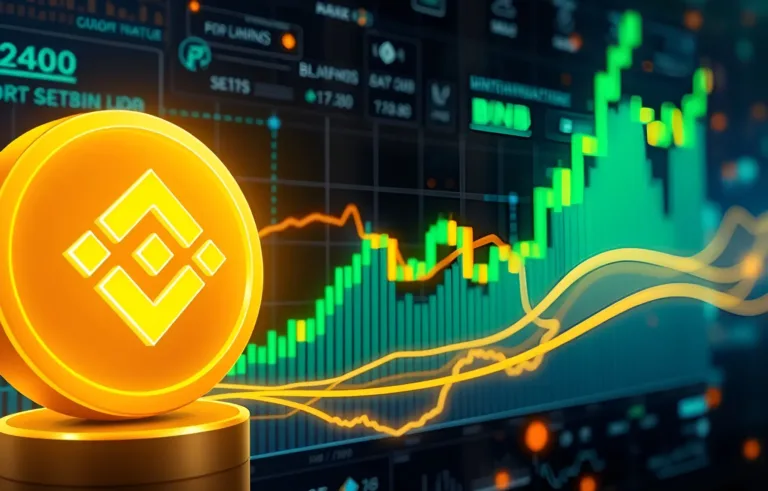Kaspa Price Prediction 2030
Kaspa (KAS) powered by its unique BlockDAG architecture. Expert predictions for Kaspa’s 2030 price range from a conservative $0.38 to an optimistic $6.82. As such, its future valuation hinges heavily on technological advancement, market dynamics, and adoption trends.
Key Takeaways:
Hide- Changelly: Predicts Kaspa could reach $1.46–$1.72, based on successful tech milestones (Source: Changelly)
- CoinCodex: Offers a bearish outlook of $0.38–$0.46 due to market risks and lack of innovation (Source: CoinCodex)
- Flitpay: Expects a bullish scenario with KAS hitting $2.39–$6.82 if Layer 1 dominance is achieved (Source: Flitpay)
- InvestingHaven: Projects a stable rise to $1.44, tied to tech adoption and user growth (Source: InvestingHaven)
- Paxful: Highlights the scalability of DAGKNIGHT and Kaspa’s potential as a decentralized Visa-level system (Source: Paxful)
- Botsfolio: Warns of regulatory and competitive risks that may limit Kaspa's growth (Source: Botsfolio)
How High can a Kaspa (KAS) go by 2030?

Kaspa’s future is tethered to both innovation and market volatility. While recently, experts predict a bright future for KAS by 2025. However, this section delves into the core factors influencing its trajectory and outlines what could propel or undermine its success.
Technology as the Cornerstone: The DAGKNIGHT Protocol
Kaspa’s primary technological edge lies in its DAGKNIGHT protocol. This system promises near-instantaneous block confirmations and immense scalability—comparable to traditional financial networks like Visa but without centralization.
If realized at scale, this feature could firmly establish Kaspa as a leader in the Layer 1 blockchain race.
Smart Contract and DeFi Domination Goals
For Kaspa to flourish, it must become a top-tier platform for smart contracts and decentralized finance (DeFi).
This ambition involves attracting developers from rival chains like Ethereum and Solana. Success here depends not just on technology, but on ecosystem vibrancy and developer incentives.
Bitcoin’s Market Influence
The anticipated Bitcoin halving in 2028 may act as a powerful external catalyst. Historically, Bitcoin bull runs have lifted altcoins in their wake.
Kaspa could benefit significantly from this pattern, especially if it’s already gaining momentum on its own technological and adoption merits.
Regulatory Threats Looming
A global regulatory crackdown could curtail Kaspa’s expansion. Heavy-handed laws targeting privacy, scalability, or DeFi applications might stifle its growth. Uncertainty in legal frameworks adds risk to any long-term projection.
Stiff Competition from Other Chains
Kaspa isn’t innovating in a vacuum. Competitors like BlockDAG and Avalanche are not only technologically advanced but also enjoying increasing community and developer support.
BlockDAG, in particular, is gaining traction with its compatibility with Ethereum Virtual Machine (EVM) and WebAssembly (WASM), potentially eclipsing Kaspa’s reach.
Potential Technical Shortcomings
The hype surrounding Kaspa’s protocol must be matched by reliable performance. Any signs of technical debt—unresolved bugs, bottlenecks, or delays—could erode trust and shift developer and investor attention elsewhere.
Reading the Market: Signs of Momentum or Collapse
Understanding price trends and on-chain activity is essential for investors looking to anticipate major shifts:
- Resistance Level Breakouts: Observing price movements above key Fibonacci retracement levels, like $0.101, could signal bullish trends.
- Network Activity Metrics: Rising daily transactions and active wallets are healthy indicators of adoption and usage.
- Halving Events: Kaspa’s emission model features gradual monthly supply decay, differing from Bitcoin’s sudden halving events. Still, this could introduce scarcity-driven bullish patterns over time.
Price Prediction: What Experts Forecast
A glance at the 2030 projections reveals a wide divergence in expectations:
- Changelly foresees a range between $1.46 and $1.72, assuming widespread adoption and successful tech rollouts.
- CoinCodex takes a bearish stance, estimating $0.38 to $0.46, citing lack of innovation and market downturns.
- Flitpay projects the most optimistic range of $2.39 to $6.82, banking on macro catalysts like Bitcoin’s halving and Kaspa’s dominance in Layer 1 space.
- InvestingHaven pegs a singular target at $1.44 per KAS, grounded in expected technological milestones and increased user engagement.
Tips for Evaluating Kaspa’s Future Investment Potential
Predicting a crypto’s long-term value requires both analysis and caution. The tips below stem from the key themes explored in the previous section, offering investors strategic considerations.
- Watch DAGKNIGHT Progress: Monitor GitHub updates and community discussions about DAGKNIGHT. If technical promises become realities, confidence in Kaspa will rise.
- Track Developer Migration: Platforms like DeFi Llama and GitHub can show whether developers are shifting toward Kaspa from other ecosystems.
- Monitor Bitcoin Movements: As Bitcoin’s halving approaches in 2028, use it as a barometer for broader crypto sentiment that could influence Kaspa.
- Stay Informed on Regulatory News: Regulatory shifts can occur rapidly. Follow announcements from the SEC, EU, or G20 to assess potential threats.
- Evaluate Competitor Performance: BlockDAG and Avalanche are direct threats. Regularly compare Kaspa’s updates and partnerships to its rivals.
- Use Technical Analysis: Tools like Fibonacci retracements and volume indicators help assess whether market momentum supports bullish scenarios.
- Gauge Ecosystem Health: Look at wallet activity, validator participation, and on-chain governance. These data points reflect real-time user confidence.
The Future of Kaspa (KAS) by 2030
Kaspa presents a high-risk, high-reward scenario for 2030. Its promise lies in scalable, fast blockchain architecture, compelling enough to challenge legacy networks.
However, success is conditional—dependent on adoption, technological execution, favorable regulation, and broader crypto market trends.
Predictions vary widely: the conservative side warns of $0.38, while bullish voices anticipate peaks as high as $6.82.
Prospective investors should blend optimism with skepticism, and above all, conduct continuous due diligence as 2030 approaches.







